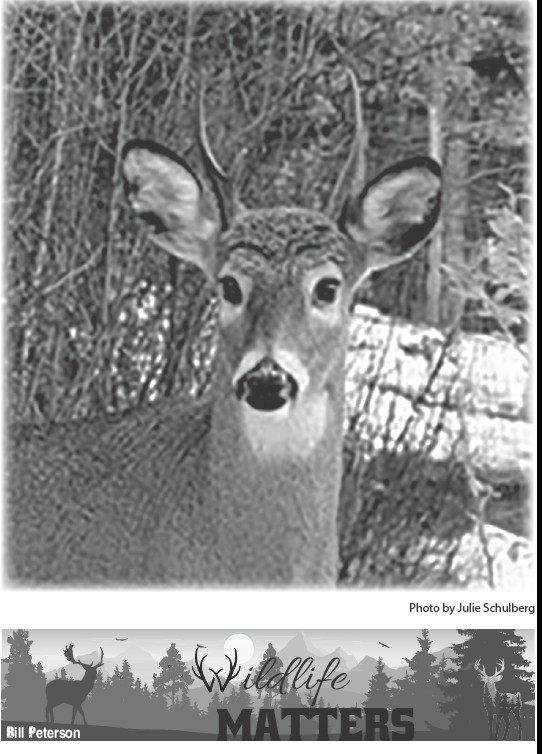Bill Peterson
Latest Articles:

Wildlife Matters
Bill Peterson | March 04, 2022
One more parasite before I switch to other topics. There will be more on parasites and diseases in the future as some can be very serious for people too. The “Large American Liver Fluke” is well named as it can be three inches long, 1 ½ inches wide, and the adult lives in the liver. The normal hosts for it... READ MORE >

Brain Worm (Part 3)
Bill Peterson | February 11, 2022
Much has been learned about brain worm since it was shown to be the cause of “moose sickness” in 1964. However, there are still many important questions that need to be answered. Do infected gastropods behave differently than uninfected ones resulting in their being more likely to be ingested? Do infected moose no longer showing signs die from the parasite... READ MORE >

Brain Worm (Part 2)
Bill Peterson | February 04, 2022
Part 1 covered general information about the parasite, its life cycle, and that very few deer in this area do not eventually become infected with it. This column will deal with how many first stage larvae are on deer pellets, infection of gastropods, and their ingestion by deer (or other host). Estimating the number of larvae on deer pellets was... READ MORE >

Brain Worm (Part 1)
Bill Peterson | January 28, 2022
Moose in Minnesota have been seen exhibiting abnormal behavior and physical disabilities, not caused by injury, since at least 1912. Perhaps the most common and oldest reported observations were of moose walking in endless circles in the snow on frozen lakes. Other sightings often were that of the head tilted and turned to one side, stumbling, poor coordination, leg paralysis,... READ MORE >

Winter Ticks (Part 2)
Bill Peterson | January 14, 2022
In part 1, I only covered the life cycle of winter ticks and their impact on moose. Part 2 will present additional important information on them. Winter ticks are not found in Alaska, Newfoundland or northern most Canada. Other than those areas, all North American moose populations have winter ticks. Their primary hosts are moose, elk, white-tailed deer, mule deer,... READ MORE >

Winter Ticks (Part 1)
Bill Peterson | January 07, 2022
Winter is an appropriate time to bring up the subject of winter ticks on moose. Many people in this area are aware that this tick species can be a significant, and sometimes fatal, problem for moose. The sight of a heavily infested moose in late winter with large areas devoid of hair is unpleasant. The full impact of the problem... READ MORE >

Social significance of antlers
Bill Peterson | December 17, 2021
A common belief is that antlers are for fighting during the rut and for defense against predators. They are formidable and effective weapons which can be used in both situations. However, there is considerable potential to cause injury or death to an opponent of the same species. That is not in the best interest of the population. The problem of... READ MORE >

Regulation of the Antler Cycle:
Bill Peterson | December 10, 2021
It once was commonly believed that temperature controlled the antler (and breeding) cycle of the deer family and most other species. A study in Poland in 1954 was the first to demonstrate that the antler growth cycle was controlled by change in daylight hours throughout the year (photoperiod). Shortly after the start of antler growth in spring, a group of... READ MORE >

Nervous System Regulation of Antlers and Antler Asymmetry
Bill Peterson | November 19, 2021
Antler development is usually on the 2 permanent pedicles which developed a few months after birth, but they also can develop at other locations. A paper published in 1894 reported a 9.8 cm antler grew at the location where a broken piece of glass had pierced the skin and periosteum (a tissue covering bones) of a roe deer’s face. Since... READ MORE >

Wildlife Matters
Bill Peterson | November 05, 2021
A brief introduction is in order. I was the Area Wildlife Manager for MN D.N.R. from 1969-2000. For much of that time I had a weekly (to occasional) column in the News-Herald on matters pertaining to wildlife. People in this area have always had great interest in wildlife and nature in general. I intend to write mainly about wildlife topics... READ MORE >

